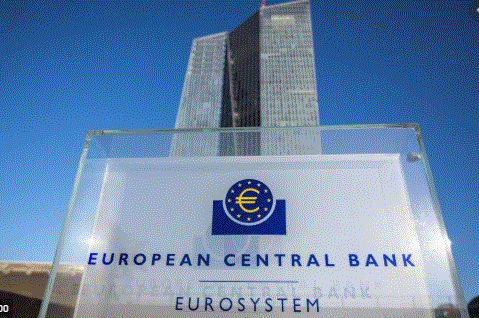
June 4 2020
USDCAD Open (6:00 am) 1.3514-18, Overnight Range: 1.3491-1.3528
- ECB increases Pandemic Emergency Purchasing Program to €1.350 trillion
- Germany pumps €130 billion into its economy
- US jobless claims meet expectations.
- US dollar slides in early NY trading
Percent change in currency value since previous close

Source: Saxo Bank/IFXA
FX Recap and outlook: The ECB upped its game in dramatic fashion with €600 billion increase in the Pandemic Emergency Purchasing Program. An increase was expected but not of this magnitude. In addition, the term of these purchases is extended to June 2021. Interest rates were left unchanged. EURUSD jumped to 1.1268 from 1.1202 on the news, exceeding its overnight peak of 1.1238
Eurozone Retail Sales fell 11.7% in April, which was a tad better than the 15% drop expected but was ignored.
US weekly jobless claim rose 1.87 million, close to expectations and well below last week’s 2.12 million increase.
Overnight, this week’s FX market risk rally took a breather overnight in a defensive move ahead of the ECB monetary policy meeting and press conference. Asia equity markets followed Wall Street’s lead but with a lot less enthusiasm. European bourses were not interested at all, and the major indexes and S&P futures are posting losses, at the time of writing. Oil prices are lower, and gold is a tad firmer.
Many of the major currency pairs are back to their pre-pandemic levels. Traders are betting that the worst is over, and that the global economic recovery will be better than ever. The global recovery sentiment got an added boost from yesterday’s better than expected US ADP employment change data (actual -2.76 million vs forecast -9.0 million), and rise in ISM non-manufacturing PMI to 45.4 in May.
The US and China are sniping at each other because of the pandemic, Hong Kong, and trade issues.
Asia markets were a tad more cautious due to both Opec dysfunction and US/China tensions. Saudi Arabia and Russia agreed to extend 9.7 million barrel/day production cuts until August 1. However, the rest of Opec must agree, and Iran for one is not on board. WTI oil dipped consolidated losses from yesterday’s peak of $38.10/barrel in a $36.40-$37.06/b range.
The US plans to ban passenger flights from China, in retaliation for similar Chinese actions against American airlines. The US and China are sniping at each other because of the pandemic, Hong Kong, and trade. FX markets are largely ignoring these developments.
GBPUSD dropped from 1.2576 at yesterday’s close to 1.2502 just before NY opened, in part because UK construction PMI was a weaker than forecast (actual 28.9 vs prediction 29.7). Prices have since bounced to 1.2535.
Traders are ignoring the deteriorating UK/EU trade talks even after Wednesday’s Bank of England warning to “prepare for the worst.”
USDJPY is extending gains made after breaking through resistance at 108.10. It touched 109.15 just before NY opened, underpinned by expectations for a strong global economic rebound and higher US Treasury yields.
AUDUSD and NZDUSD drifted lower on the back of broad, but mild US dollar demand. Traders are also concerned that both currency pairs are due for a correction after their steep gains since the middle of May. Australia Q1 GDP rose 1.4% y/y as expected.
Stephen Poloz’s term as Governor of the Bank of Canada ended with a whimper.
USDCAD consolidated inside yesterday’s 1.3482-1.3568 range with price action dictated by US dollar moves against the G-10 majors. Stephen Poloz’s term as Governor of the Bank of Canada ended with a whimper. His replacement Tiff Macklem attended yesterday’s policy meeting but as the policy statement noted: “he participated as an observer in Governing Council’s deliberations for this policy interest rate decision and endorses the rate decision and measures announced in this press release.”
The BoC left rates unchanged at 0.25%, and gave themselves a pat on the back noting “CPI inflation has decreased to near zero, as anticipated in the April MPR” and “The Bank’s programs to improve market function are having their intended effect.”
USDCAD Technicals: The intraday technicals are bearish below 1.3660, looking for a break of 1.3470 to extend losses to 1.3430 and then 1.3370. A break above 1.3570 would relieve the downward pressure and target 1.3660. The weekly chart highlights the small gap between 1.3430 and 1.3460, which if broken targets 1.3360, the 50% Fibonacci retracement level of the 2017-2020 range. For today, USDCAD support is at 1.3470 and 1.3410. Resistance is at 1.3540 and 1.3580. Today’s Range 1.3470-1.3560
Chart: USDCAD weekly
Chart: USDCAD weekly

Source: Saxo Bank





